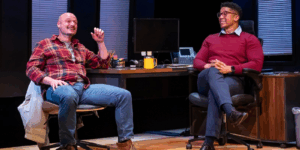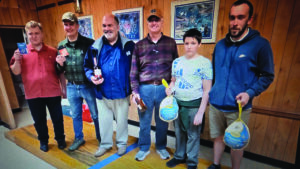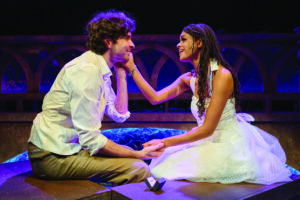Longtime Northern Virginia Real Estate developer Ross W. Keith died at age 86 after a lengthy illness at his home last week, and among other things the occasion spurred recollections in Falls Church of Keith’s central role in the 1970s development at the City’s central intersection where Routes 29 (Washington St.) and 7 (Broad St.) cross.
As Falls Church is now about to consider a massive new mixed use development on 3.6 acres at the same intersection, just across the street on property that is now the Robertson Building, the story of how the low-density two-story Independence Square that Keith purchased and developed has resurfaced in the context of Keith’s passing.
In 1978, after years of discussion and debate in the City, Keith won the bid to purchase 1.68 acres of land the City of Falls Church had acquired at the southeast corner of the intersection which continues to operate as the Independence Square, a two-story office condo complex that is home to an assemblage of small hair dresser, doctor and insurance offices, among others.
The sale involved the first effort by the City to get into the development business, itself, by purchasing two parcels of land and then selling them to developer who was committed to the City’s desire for the low-density approach. This is according to the news clip archives of Falls Church architect Paul Barkley (who earlier this month made News-Press headlines with his documentation of the early mid-1980s history of Fairfax County efforts to get control of the Falls Church water system).
The anti-density prejudices of the Falls Church City government were well entrenched by the 1960s (the City became an independent jurisdiction in the late 1940s). There were two important incidents that established this bias.
The first was the effort to cause fledgling Metro system to abandon its plans to extend its Orange Line up the W&OD Trail – with a Metro station right at the intersection of Route 7 and the trail in the center of the City).
Fears of an invasion of the City from criminal elements pouring out of the blighted areas of Washington D.C. were inflamed to fuel the movement to keep Metro out of the City, despite the enormous economic development potential a Metro station would bring, as came to pass at all the Metro station stops in Arlington.
The City’s second anti-development move was the rejection of the Falls Church Bank plans to build a 10-story on land where it had occupied an old stone phone company building that stood where the Ireland’s Four Provinces restaurant is now. The bank submitted its plans in April 1968, and citizens raised such a howl that within a month it withdrew the plans, and instead was given a sweetheart deal by Fairfax County to construct, as the First Virginia Bank, two 10-story giant box office buildings in the Seven Corners area of the county.
The bitterness that attended that development led some at the bank to take pleasure in the idea that the new twin buildings project would cast a long shadow over the City of Falls Church across the street from it.
A rival developer who owned an office building near the Washington-Broad intersection wound up acquiring the former bank property at the crossroads intersection, and built the office complex where the Ireland’s Four Provinces now operates, done in a series of deals with the City that determined its architecture (reminding many of a prison) and a central square with a fountain intended to be a central city gathering place.
Once constructed, the fountain soon became dysfunctional as its key artistic elements, a half dozen readily breakable six-foot forms that were aptly described as “bread sticks” were quickly stolen or broken.
The Independence Square plan, mapped out by Paul Barkley’s architectural firm, was an intermediate alternative among four plans that were submitted, one allowing for construction of up to four stories with underground parking at one extreme, and another calling for a City park with no development, at the other.
The biggest controversy surrounded the City’s role in the purchase and sale of property for economic development purposes. Later, in the 1990s, the City established the Economic Development Authority which took the lead role in the purchase of a vacant parcel in the 300 block of W. Broad known at the time as the Podolnick Property. Located next to the old U.S. Post Office building, that property was part of what was rolled into the land purchased by the Rushmark Company that is now the mixed-use project anchored by a Harris Teeter grocery.
In 1978, the City sold the 1.68-acre property it assembled for Independence Square for $320,000 to Ross Keith, who for years kept his real estate office adjacent the site where the Red, White and Bleu wine shop and Perfect Ending hair dressers currently operate.
Keith built Independence Square and subsequently sold all of its office condo units. The mayor of Falls Church at the time of the transaction was Hal Miller, Carol deLong was the vice mayor and Harry Wells was the city manager.












